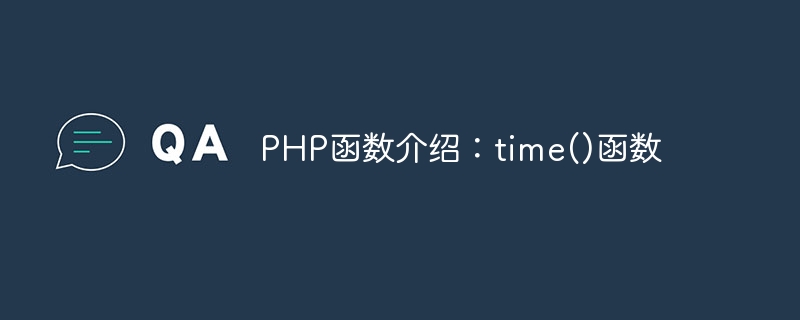

PHP function introduction: time() function
PHP is a commonly used server-side programming language with powerful function library support. Among them, the time() function is one of the commonly used time functions in PHP. This article will introduce in detail the role, usage and specific code examples of the time() function.
1. The role of time() function
The time() function is a built-in function in PHP, used to obtain the current Unix timestamp (that is, from January 1, 1970 00: 00:00 UTC to the current time in seconds).
2. How to use the time() function
The time() function has no parameters to pass and can be called directly. It returns an integer value representing the current Unix timestamp.
The following is a basic usage example:
The above code will output the current Unix timestamp.
3. Code example of time() function
$targetDate) { echo "指定日期已过去"; } else { echo "指定日期尚未到来"; } ?>
In the above code, we use the strtotime() function to convert the specified date into a Unix timestamp and compare it with the current timestamp to determine whether the specified date has passed.
"; echo "当前时间:".$currentTime; ?>
In this example, we use the date_default_timezone_set() function to set the time zone to Shanghai time zone, and then use the date() function to convert the current timestamp Format the specified date and time and output.
4. Summary
The time() function is one of the commonly used time functions in PHP. It can easily obtain the current Unix timestamp. By converting timestamps, we can perform various time-related operations and judgments. At the same time, we can also use the date() function to convert the timestamp into different date and time formats. I hope the introduction in this article can help you better understand and use the time() function.
The above is the detailed content of Introduction to PHP functions: time() function. For more information, please follow other related articles on the PHP Chinese website!




